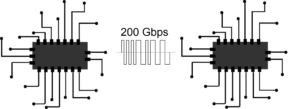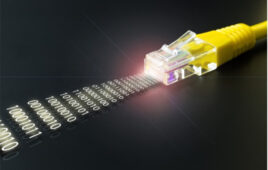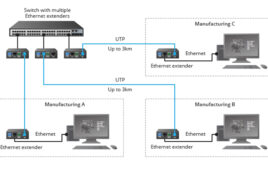Engineers will once again roll up their sleeves and figure out how to increase data rates because “we need fatter channels.”
 Because the need for speed in wired connections never ends, engineers know that they much constantly push boundaries and overcome the associated problems. With the use of video now everywhere, 5G coming online, and 112 Gbps links now standardized and in operation, the industry moves on. To address the next challenge, the Optical Internetworking Forum (OIF) has launched a technical project preview to investigate the technology needed to produce data throughput of 200 Gbps in a single lane. To learn what the project preview will encompass, 5G Technology World spoke with OIF president Nathan Tracy of TE Connectivity.
Because the need for speed in wired connections never ends, engineers know that they much constantly push boundaries and overcome the associated problems. With the use of video now everywhere, 5G coming online, and 112 Gbps links now standardized and in operation, the industry moves on. To address the next challenge, the Optical Internetworking Forum (OIF) has launched a technical project preview to investigate the technology needed to produce data throughput of 200 Gbps in a single lane. To learn what the project preview will encompass, 5G Technology World spoke with OIF president Nathan Tracy of TE Connectivity.
Tracy explained that the project preview — expected to be approved by the OIF in Q3 2020 — will take one-to-two years and will start with a learning period to create the body of knowledge needed to develop standards. The test-and-measurement industry will play a key role in making measurements on PCB trace lengths, modulations, PCB materials, and so forth.
As with standards produced for previous data rates previous data rates, the “around 200,” Gbps standards will, according to Tracy, consist of several standards depending on the transmission lengths. That’s where the users of these links will play a role, providing input on which transmission lengths to tackle first. Typical lengths include 25 mm (chip-to chip), 50 mm (package-to-package), and 500 mm (card-to-card). Simulations and measurements on parameters such as insertion loss, return loss, crosstalk, and noise will be needed. Engineers will need to develop the math needed to quantify the channel parameters. From that math will come the circuits needed to make the next higher speed possible. Initial companies represented in this project include Intel, Broadcom, Semtec, Cisco, and TE Connectivity

Insertion loss is one of several channel measurements that engineers will need to make in developing the next generation of serial data standards. As always, the test & measurement industry has to lead the way in developing a new technology. Photo by Martin Rowe.
In the video below, Tracy explains in detail the process for organizing the project preview and its goals.




Tell Us What You Think!